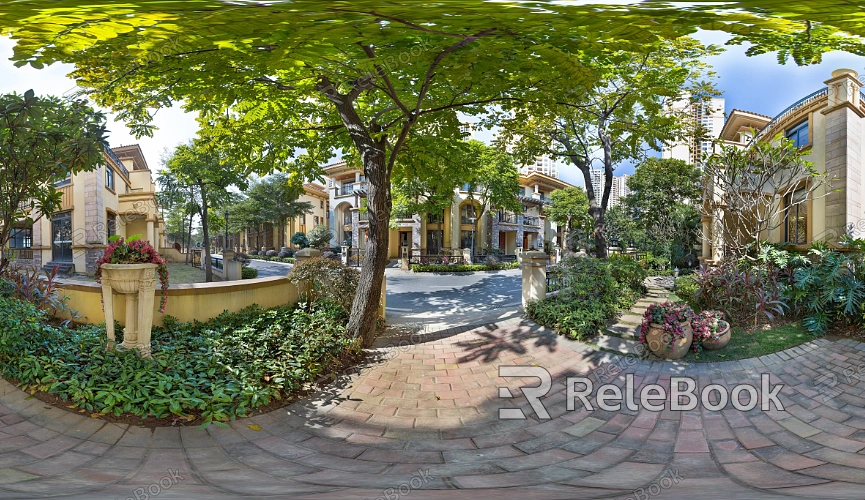How to Adjust Lighting with HDR Forest Textures in Unreal Engine?
HDR forest textures are widely used for their ability to capture intricate lighting details, particularly in outdoor environments. In software like Unreal Engine, HDR textures are essential for rendering natural light and complex forest scenes. This article will explore how to adjust lighting using HDR forest textures in Unreal Engine and offer some effective methods and tips.

1. The Lighting Advantage of HDR Forest Textures
The primary advantage of HDR (High Dynamic Range) images is their ability to capture a broader range of brightness and contrast, resulting in more realistic lighting effects. This is especially crucial in forest scenes where lighting variations and shadow management can be complex. With HDR textures, these subtle changes in lighting are much easier to replicate.
Highlight Details: HDR images retain richer brightness information, avoiding the overexposure that can occur with traditional images, making scenes under sunlight appear more natural.
Shadow Details: Unlike standard textures, HDR preserves more detail in shadowed areas, helping to prevent distortion or blur in darker sections of your scene.
2. Selecting the Right HDR Forest Texture
Choosing the appropriate HDR texture in Unreal Engine is key. Different forest environments require different HDR images to match the lighting and atmosphere.
Resolution: To ensure realistic lighting effects, using high-resolution HDR textures is crucial. Low-resolution images may compromise the overall lighting quality in expansive forest scenes.
Exposure Range: Forest scenes often experience varying levels of light intensity. The broad exposure range of HDR images allows you to capture everything from sunlight to shadows, ensuring smooth transitions.
3. Setting Up HDR Environmental Lighting in Unreal Engine
HDR textures are often used in Unreal Engine to set up environmental lighting. This helps simulate more natural lighting conditions. By applying HDR textures to a sky sphere or global light source, you can achieve realistic reflections and light scattering effects.
Adjusting Light Source Direction: In forest scenes, the primary light source is typically the sun. When using HDR images, ensure the direction of the light source aligns with the sun’s position. You can adjust the direction by rotating the HDR texture.
Brightness and Contrast Adjustment: Depending on the needs of your scene, adjust the brightness and contrast of the HDR texture to avoid overexposed or underlit areas. This will help create a balanced lighting effect.

4. Enhancing Reflections and Transparency
Beyond environmental lighting, HDR images can also enhance reflections and transparency. In forest scenes, common elements like water surfaces and leaf transparency can be significantly improved with HDR textures.
Water Reflections: Applying an HDR image to water materials enhances reflective properties, making the water surface more responsive to changes in light and surrounding environments.
Leaf Transparency: As light passes through leaves, HDR lighting can better represent their transparency and light refraction, making foliage appear more realistic and natural.
5. Combining HDR Textures with Normal Maps for Detail Enhancement
Combining HDR textures with normal maps can greatly enhance the level of detail in a scene. This is particularly useful for surfaces like ground, tree trunks, and rocks, where HDR lighting can make these details more vivid.
Ground Texture Enhancement: HDR lighting on normal-mapped surfaces like rocks, grass, and fallen leaves can add more depth and realism, making textures appear more three-dimensional.
Tree Trunk Details: Tree bark rendered under HDR lighting looks more textured and dimensional, with enhanced surface details that create a stronger visual impact.
6. Optimizing Rendering Performance in Unreal Engine
While HDR textures significantly enhance rendering quality, high-resolution HDR images can also place a heavy demand on system resources. It’s essential to optimize rendering settings to ensure Unreal Engine runs smoothly while using HDR textures.
Sampling Settings: Optimizing sampling settings can reduce unnecessary light tracing calculations, boosting rendering speed while maintaining high-quality image output.
Noise Reduction: During rendering, noise reduction tools can help minimize artifacts caused by HDR lighting, further enhancing the final image quality.
7. Post-Processing and Visual Effects Enhancement
Even after rendering in Unreal Engine, post-processing is critical to enhancing the final image quality.
Color Grading: Using post-processing software, you can adjust the contrast, brightness, and saturation under HDR textures, making the final image more vibrant.
Depth of Field and Light Effects: Adding depth of field and light effects like lens flares and bloom during post-production can give your scene a cinematic feel, further enhancing its visual impact.
By following these steps, HDR forest textures can dramatically improve outdoor lighting effects in Unreal Engine, adding more detailed and realistic visuals to your scenes. If you're searching for high-quality HDR textures, Relebook offers a wide variety of HDR textures, 3D models, and material maps. These resources will help you effortlessly create stunning 3D scenes. Explore Relebook’s assets to achieve remarkable visual results in your projects.

